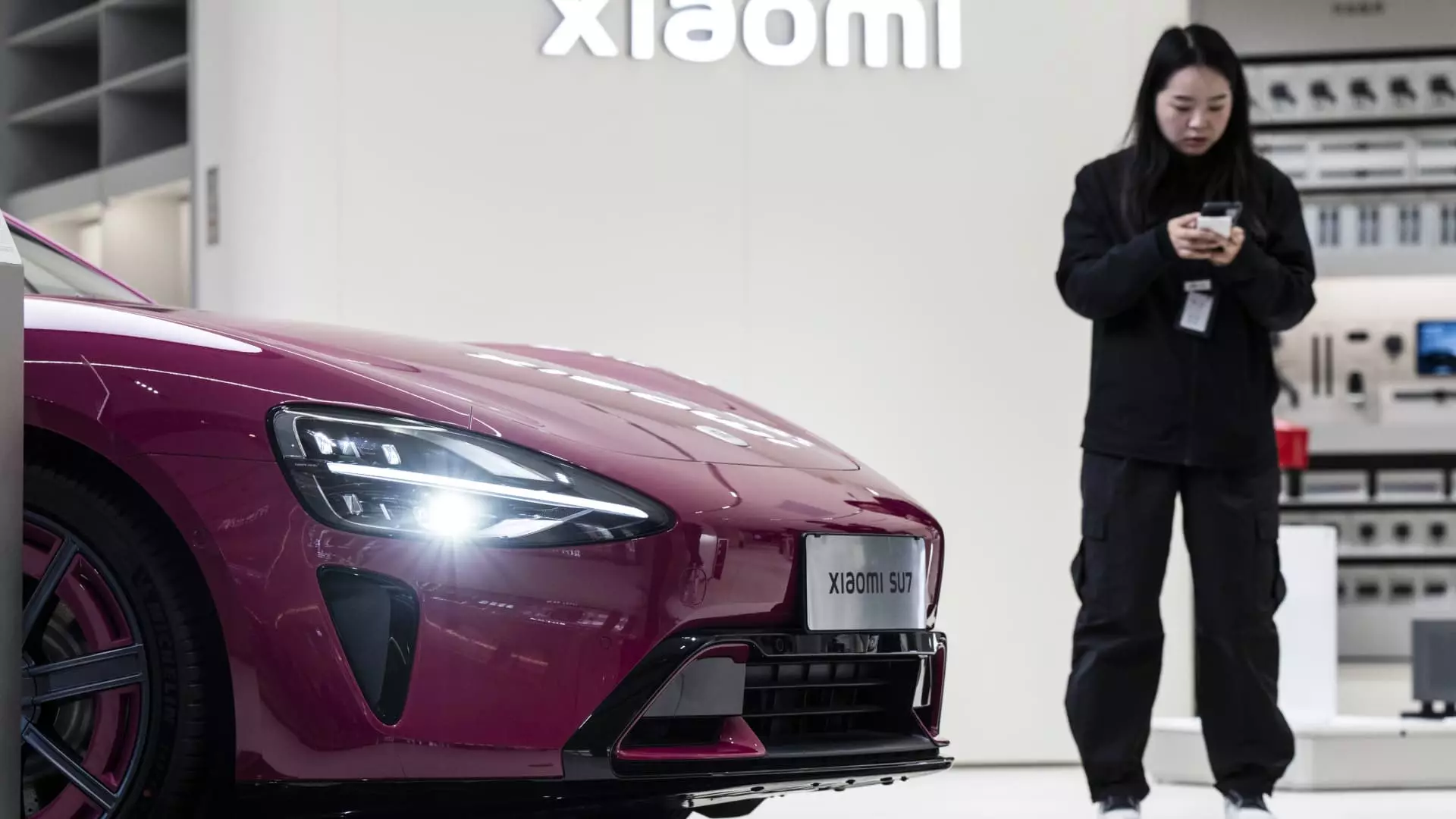The electric vehicle (EV) market in China has become a bustling arena, echoing the frenetic pace and cutthroat competition that characterize Silicon Valley’s tech startups. In March 2023, newcomers like Xiaomi, Xpeng, and Leapmotor captured headlines with their remarkable delivery numbers, each surpassing the 30,000 unit marker. Their achievements reflect not only impressive production capabilities but also a shifting tide in consumer demand towards electric mobility. It is a clear statement: some players are emerging as leaders while others languish behind, further emphasizing the disparity between established giants and fledgling startups. This vibrant ecosystem prompts an examination of what propels some manufacturers to success while others falter in a challenging market.
Tales of Triumph: Xiaomi and Xpeng on the Rise
Xiaomi has truly generated a sensation in March, delivering over 29,000 electric vehicles, which marks a significant leap compared to its consistent deliveries of around 20,000 in previous months. This growth trajectory illustrates the brand’s ability to innovate swiftly, yet it is interlaced with some treacherous risks. Just days after celebrating this achievement, a tragic incident involving its flagship model, the SU7, marred its momentum. The vehicle was reportedly in autopilot mode at the time of a fatal crash, raising a cacophony of questions about the safety of autonomous features. This is where the excitement and peril of innovation collide—representing the dualistic nature of technological advancements where thrill rides hand in hand with potential tragedy. The fine line between progress and peril reminds us that this sector cannot afford to ignore safety for the sake of agility.
Xpeng, meanwhile, showcased solid growth with over 33,000 vehicle deliveries, marking its fifth consecutive month over the 30,000 milestone. This consistent performance illustrates not only robust consumer confidence in Xpeng’s offerings but also the favorable positioning of its technology and features. High demand for their Mona M03 model—a testament to effective market penetration strategies—sheds light on the increasingly competitive battle for consumer loyalty in an industry where perception can shift overnight. With each of these players surging ahead, one wonders how long this pace can sustain itself before the inevitable market corrections come into play.
The Unyielding Giant: BYD Dominating the EV Landscape
The countdown of deliveries paints a clear picture of how BYD stands as an unshakeable titan within the electric vehicle landscape. With an astonishing 371,419 vehicles sold in March alone, the company embodies growth at scale—57.9% growth year-over-year speaks volumes. BYD’s strategic advances, such as the introduction of its “Super e-Platform,” which boasts rapid charging capabilities, further solidify its commanding presence in a market hungry for efficient solutions.
While competitors engage in fierce competition for market share, BYD appears unfazed, advancing its technological prowess with the integration of advanced artificial intelligence. Their commitment to innovation positions BYD as a neutral party ensuring a balance in the market, as it nurtures growth for others while leading as a formidable force. This positions them uniquely in an industry where the pursuit of market dominance can lead to unrelenting pressure and conflicts of interest.
The Fragile Notion of Growth: Challenges for Other Manufacturers
Yet, the landscape is not as rosy for all. Companies like Nio and Li Auto are struggling to keep pace, with growth numbers that fall short of the skyrocketing trends exhibited by their competitors. While Nio reported an impressive 15% year-over-year growth, it remains a stark contrast to the explosive growth seen elsewhere, suggesting deeper-rooted issues. Meanwhile, Li Auto’s slower growth rate of 15.5% over the quarter signals potential worries over consumer acceptance and market adaptability.
Each manufacturer faces unique barriers: Nio’s family-oriented marketing strategy through its Onvo sub-brand may not fully resonate across all consumer segments, while Li Auto’s combination of electric and fuel systems—a move initially aimed at alleviating range anxiety—could appear outdated in a market rapidly demanding full electrification. In a world where brand perception can pivot in an instant, these companies must tread carefully as they seek to redefine themselves amidst relentless competition.
The Race to Innovate: A Call for Safety and Vision
As the electric vehicle race in China accelerates, the divergent paths of these automobile manufacturers present a crucial moment of reckoning. Will the industry prioritize innovation at the potential cost of safety, or will it take a more balanced approach? With rapid advances often accompanied by accountability issues—exemplified by Xiaomi’s vehicle accident—the industry must navigate an intricate ballet of innovation and ethical responsibility.
The primary takeaway here is the realization that growth and advancement must go hand in hand with precautionary measures. As electric vehicles drive into a more prominent societal role, the commitment to safety and sustainability should reign supreme. Balancing ambition with responsibility becomes not just a necessity but a moral imperative as the world looks toward the electrification of transport. When the stakes are this high, the discourse surrounding electric vehicles must extend beyond sheer numbers and delve into the frameworks that underpin the broader transformation of our mobility landscape.

Leave a Reply